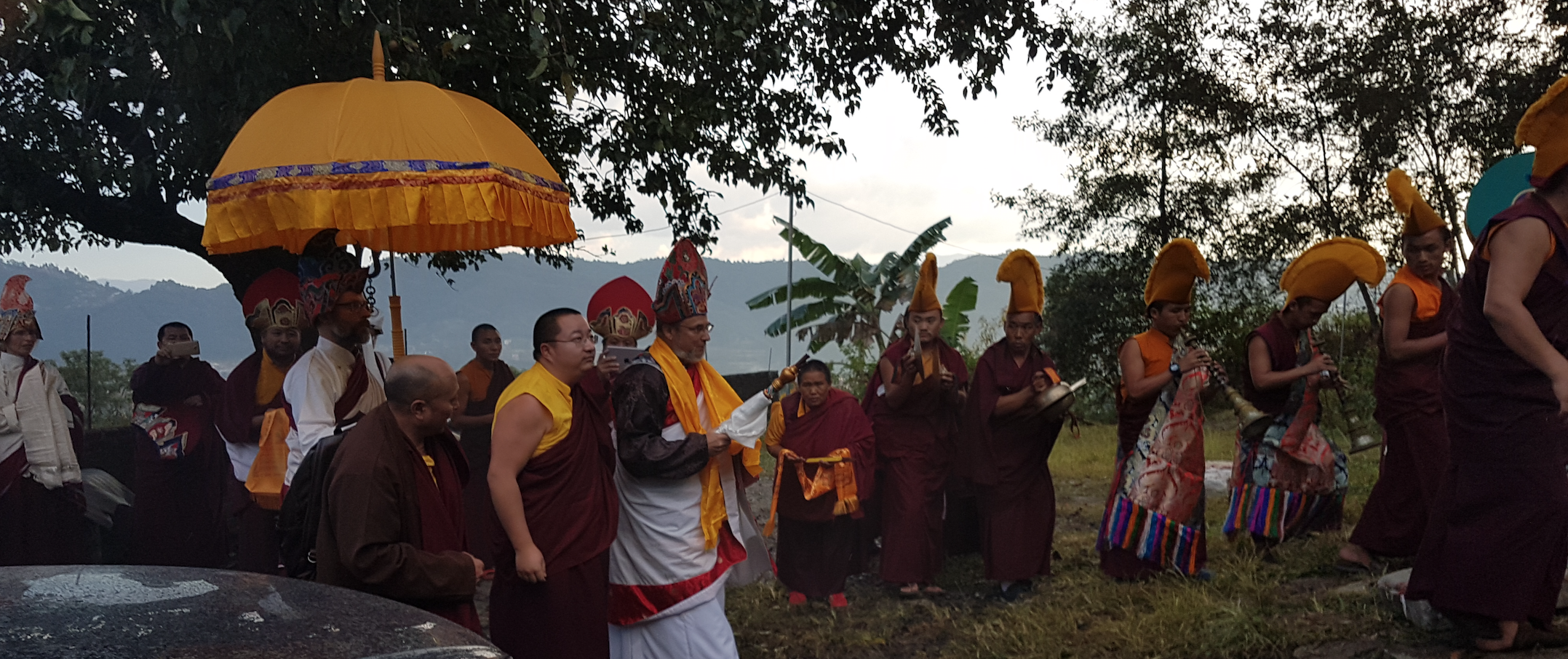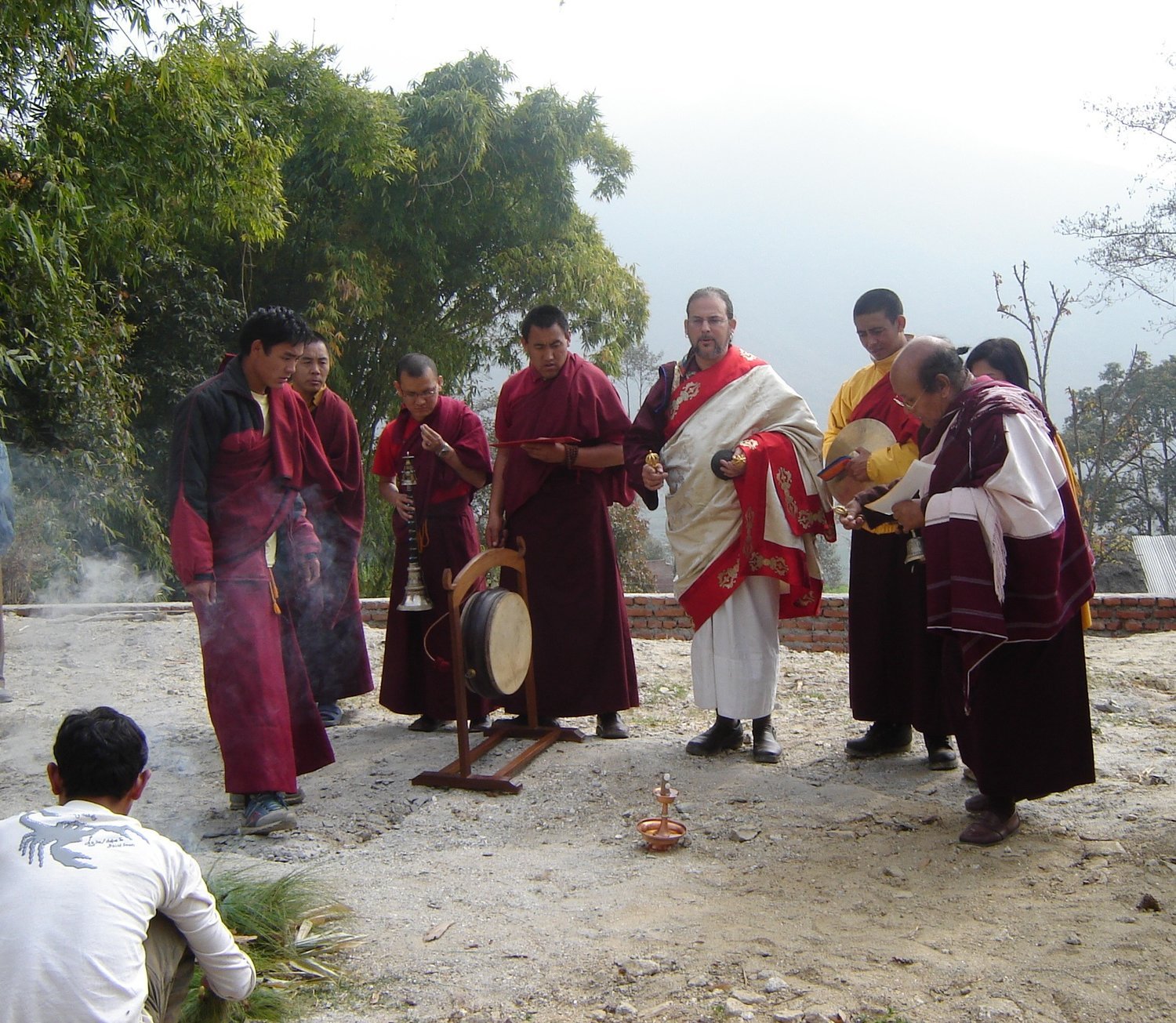
Dechen Mingyur Ling
Sankhu Vajrayogini, Nepal

Dechen Mingyur Ling was established by Lama Rangbar Nyimai Özer in 1997 as a center for meditation practice, retreat, and sacred arts.
The growing campus is located on the eastern edge of the Kathmandu valley, above the old town of Sankhu, and below the sacred ancient temple of the Dakini (Goddess) Vajrayogini.
When the lord of refuge, Kyabje Chatral Sangye Dorje Rinpoche visited the center in Sankhu Vajrayogini he made several blessing proclamations as follows:
"Here in this place, on the ground there is an eight-petalled lotus flower, in the sky there is the Golden Eight-Spoked Wheel of Dharma, in front is the Auspicious ‘Southerly niche’ and on the left side are the Tashi Tagye (Eight Auspicious Symbols).”
The lord of refuge then offered the name of the center with his hand-written script and said: "Please bring this center to fruition as soon as possible."
"Ma Dag Kham Sum Khorwa Dong Druk Dechen Mingyur Ling"
"The place where the three impure realms of cyclic
existence are emptied into unchanging great bliss"
More About Our Center
Shared by Lama Rangbar Nyimai Özer
"Whenever I go back to our Sankhu Vajrayogini retreat center I am always amazed at the depth and power of the blessings it contains naturally.
To begin with, the Blessings of the Lord of Refuge Chatral Sangye Dorje Rinpoche pervade there.
Secondly, the blessings of the Great Mother Vajrayogini, are so completely tangible in this place. The experience of peace remains unsurpassable in this holiest of Dakini places.
Thirdly, Sankhu Vajrayogini is the gathering place of Guru Rinpoche's Eighty Maha Siddhas and is blessed with several meditation caves carved into the rock such as Milarepa's cave, as well as Tilopa's and Naropa's among others.
Fourthly, Sankhu Vajrayogini is the place where Guru Padmasambhava found his consort Sakya Demma, who was discarded by the Sakya clan and left to die in the jungle where instead she was adopted and raised by Monkeys.
Finally, our center's relation with the community is growing each day and the deeper we go, the more there is to appreciate about the major ethnic Buddhist groups that reside there, the Tamangs and the Newars. The more one explores, the more one finds great depths in the way in which they all embrace the mother both formally by tradition and also informally.
In fact, these are only an immensely small fraction of the history and benefits of the location."










































